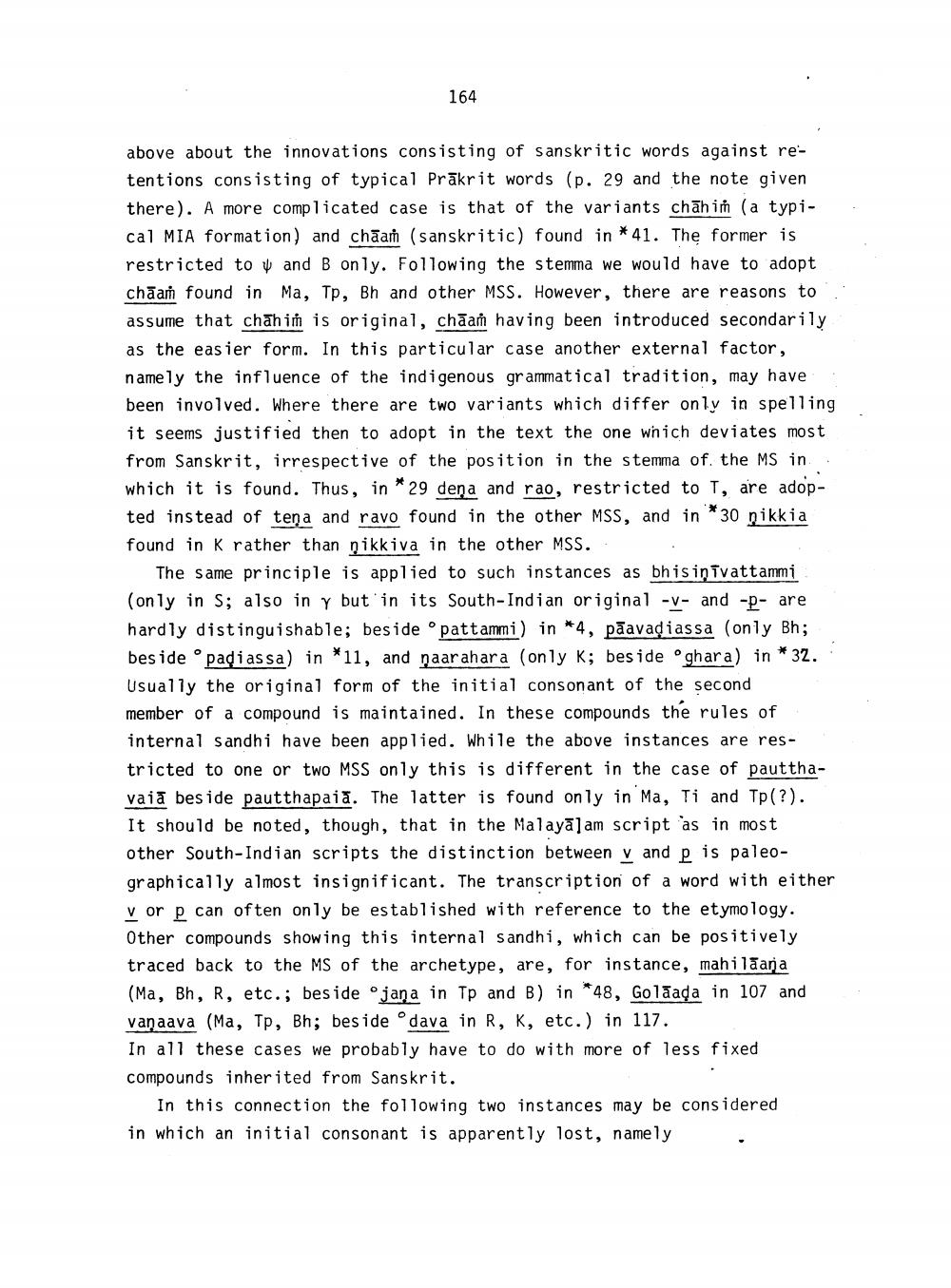________________
164
above about the innovations consisting of sanskritic words against retentions consisting of typical Prākrit words (p. 29 and the note given there). A more complicated case is that of the variants chāhin (a typical MIA formation) and chāaṁ (sanskritic) found in * 41. The former is restricted to and B only. Following the stemma we would have to adopt chāaṁ found in Ma, Tp, Bh and other MSS. However, there are reasons to assume that chāhim is original, chaam having been introduced secondarily as the easier form. In this particular case another external factor, namely the influence of the indigenous grammatical tradition, may have. been involved. Where there are two variants which differ only in spelling it seems justified then to adopt in the text the one which deviates most from Sanskrit, irrespective of the position in the stemma of the MS in which it is found. Thus, in * 29 deņa and rao, restricted to T, are adopted instead of tena and ravo found in the other MSS, and in * 30 nikkia found in k rather than nikkiva in the other MSS.
The same principle is applied to such instances as bhisiņīvattammi (only in S; also in Y but in its South-Indian original -v- and -2- are hardly distinguishable; beside opattammi) in *4, pāavadiassa (only Bh; beside opadiassa) in *11, and naarahara (only K; beside .ghara) in * 32. Usually the original form of the initial consonant of the second member of a compound is maintained. In these compounds the rules of internal sandhi have been applied. While the above instances are restricted to one or two MSS only this is different in the case of pautthavaid beside pautthapaia. The latter is found only in Ma, Ti and Tp(?). It should be noted, though, that in the Malayālam script 'as in most other South Indian scripts the distinction between v and p is paleographically almost insignificant. The transcription of a word with either v or p can often only be established with reference to the etymology. Other compounds showing this internal sandhi, which can be positively traced back to the MS of the archetype, are, for instance, mahilana (Ma, Bh, R, etc.; beside jana in Tp and B) in *48, Golāada in 107 and vaṇaava (Ma, Tp, Bh; beside odava in R, K, etc.) in 117. In all these cases we probably have to do with more of less fixed compounds inherited from Sanskrit.
In this connection the following two instances may be considered in which an initial consonant is apparently lost, namely




